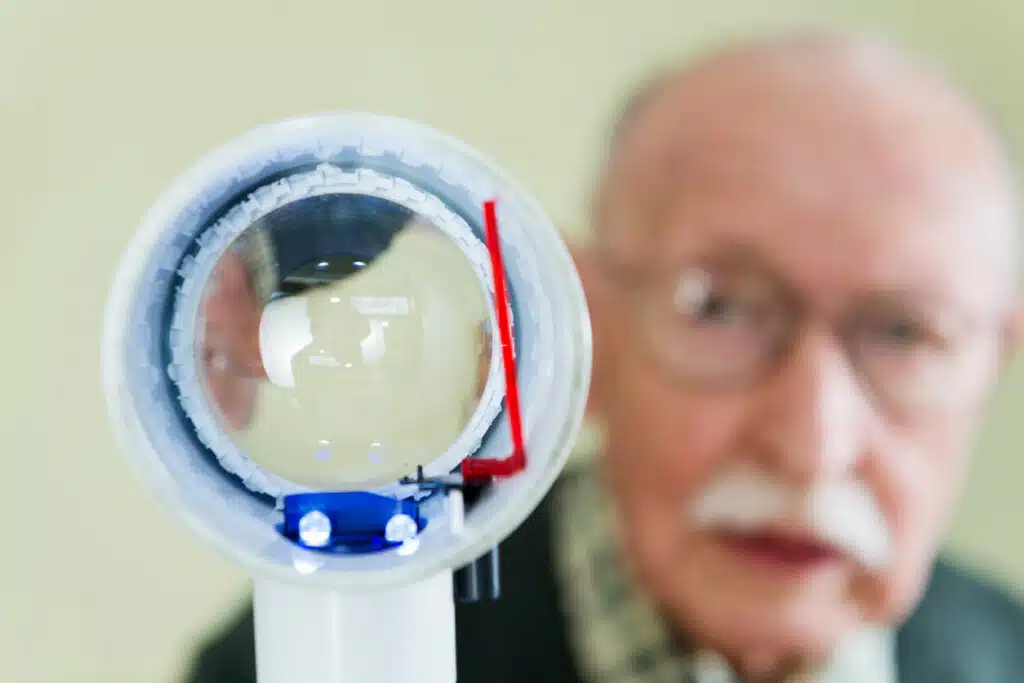
Your eyes allow you to see what happens around you, but what if your vision starts to blur and disappear over time? No one wants to lose their eyesight. Unfortunately, there are eye conditions like wet macular degeneration that can lead to blindness over time.
This article takes a closer look at wet macular degeneration, its symptoms, treatment options, and how it develops. It’s best to understand what could happen in your eyes, so you can take the right steps to take care of your vision if the need ever arises.
What is Wet Macular Degeneration?
Wet macular degeneration is a serious eye condition that can lead to rapid vision loss. It is caused by the abnormal growth of blood vessels beneath the macula, the central part of the retina that is responsible for sharp, central vision.
Macular degeneration has two types, mainly wet and dry. Wet macular degeneration is less common. However, it can seriously affect vision and quality of life.
Symptoms
If left untreated, wet macular degeneration can mean losing your ability to see. It’s important to visit your eye doctor right away if you experience any of these symptoms:
- Blurring of your central vision
- Distorted vision
- Dark spots in your central vision
- Difficulty reading or seeing fine details
- Difficulty adjusting your vision to low light levels
What Happens in the Eye During with Wet Macular Degeneration?
Your eyes are amazing, complex organs that allow you to see the world around you. The main parts of an eye include the cornea, iris, pupil, lens, retina, and the optic nerves that connect to your brain. All these parts work together to create a clear image of the world.
When you look at something, light enters your eyes through the cornea and pupil. The role of the iris is to control the amount of light that enters the eye that passes through the lens. The lens focuses the light onto the retina, which converts what you see into electrical signals. Your brain interprets these signals and creates an image of what you see.
The Retinal Pigment Epithelium
The retinal pigment epithelium (RPE) is a thin layer of cells that lies between the retina and the choroid, the layer of blood vessels beneath the retina. It plays several important roles in vision. This includes nourishing the retina, removing waste products, protecting the retina, and supporting photoreceptors.
The Macula
The macula is a small area in the center of the retina that is responsible for sharp, central vision. It contains a high concentration of cones, which is why it is so important for vision and color. The cones in the macula are sensitive to different colors of light, which allows us to see the world in color.
The Development of Wet Macular Degeneration In the Eye
Wet macular degeneration specifically affects the macula in the retina of the eye. To best understand how it happens, here’s a step-by-step process of its development.
- The retinal pigment epithelium is damaged. This can lead to the release of growth factors that stimulate the growth of new blood vessels.
- Growth of abnormal blood vessels. New blood vessels grow into the macula. These new blood vessels are often weak and leaky, and they can easily rupture and bleed.
- Leakage of blood and fluid into the macula. When the abnormal blood vessels rupture, they leak blood and fluid into the macula. This can damage or destroy the light-sensitive cells in the macula, leading to vision loss.
- Formation of a scar in the macula. The blood and fluid that leak into the macula can form a scar. This scar can distort the macula and further damage the light-sensitive cells, leading to further vision loss.
The development of wet macular degeneration can occur over months or years. In some cases, the disease can progress rapidly, leading to severe vision loss within a short period of time.
Treatment Options For Wet Macular Degeneration
Unfortunately, there is no cure for wet macular degeneration. However, there are treatments available to slow or stop the progression of the disease and preserve as much vision as possible.
The most common treatment is an anti-vascular endothelial growth factor drug, which can help shrink abnormal blood vessels. Other treatments for WMD include laser photocoagulation to close off leaky blood vessels in the macula. Photodynamic therapy uses a light-activated drug to kill abnormal blood vessels before they can rupture. In some cases, surgery may be recommended to treat wet macular degeneration.
Wet Macular Degeneration Treatment Near Me in Washington, MO
Wet macular degeneration is a serious eye condition that can lead to total loss of vision. It can cause changes in your eye that damage your retina’s ability to receive light. Gain a good understanding of what happens in your eye during wet macular degeneration and how it can impact your eyesight. This way, you can take better care of your eyes and keep seeing the world in all its glory.
Early detection and treatment of wet macular degeneration is essential to preserving your vision. Experience high-quality care for your eyes with our board-certified ophthalmologists at Advanced Sight Center in Washington. We offer treatment for various eye conditions, including wet macular degeneration. If you have any questions about eye health and our services, don’t hesitate to call us at (636) 239-1650. You can also book an appointment through our online request form.




